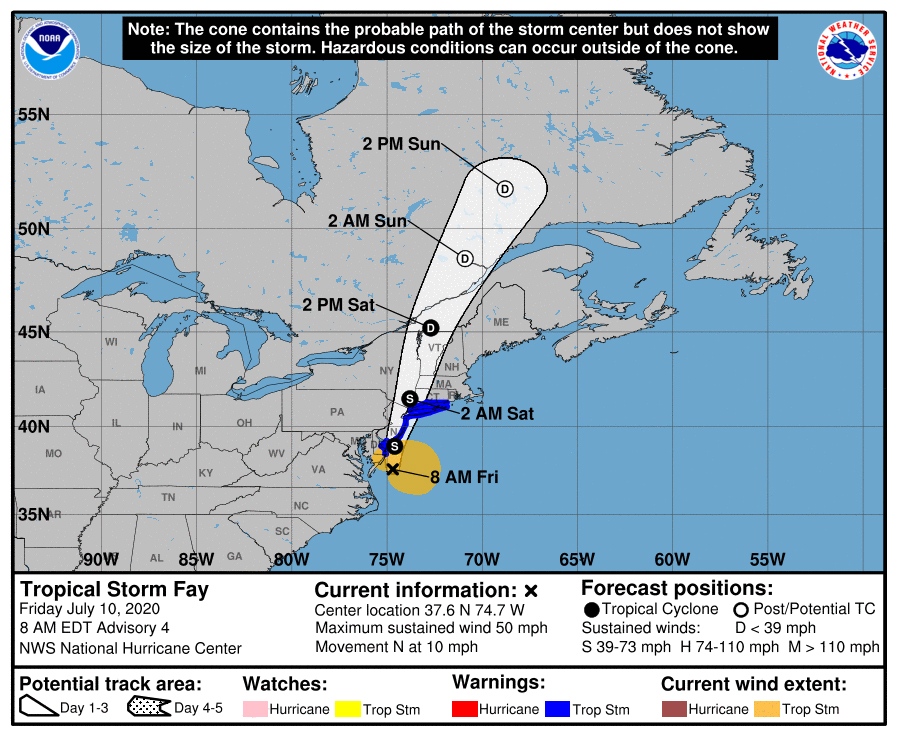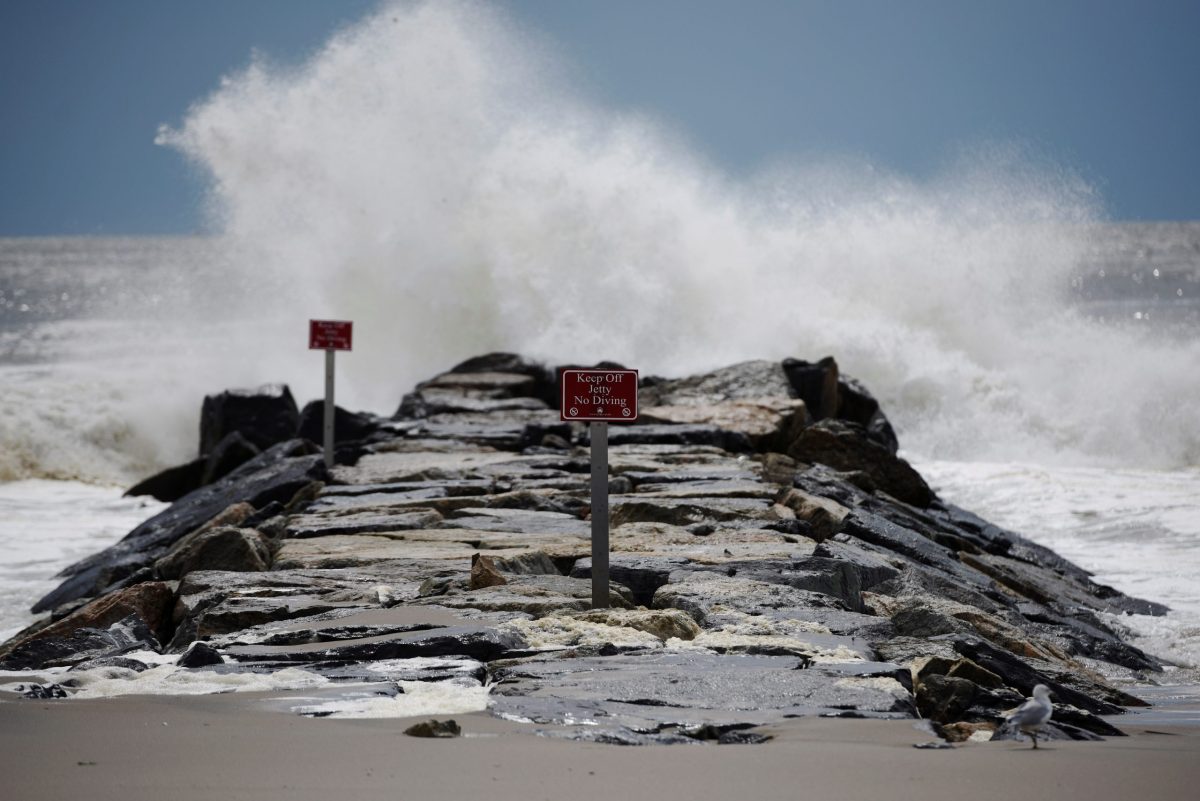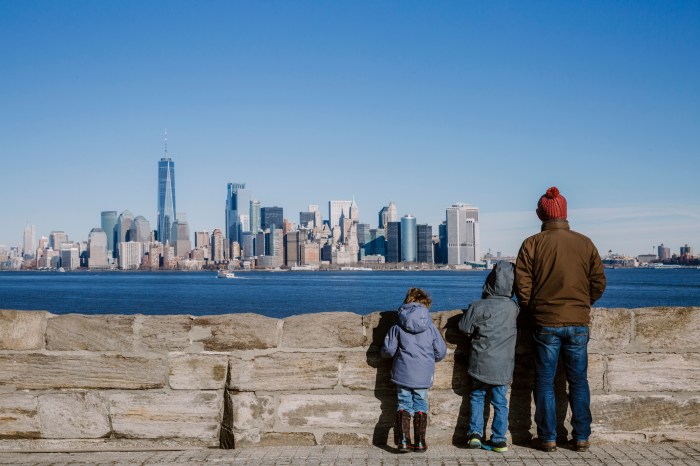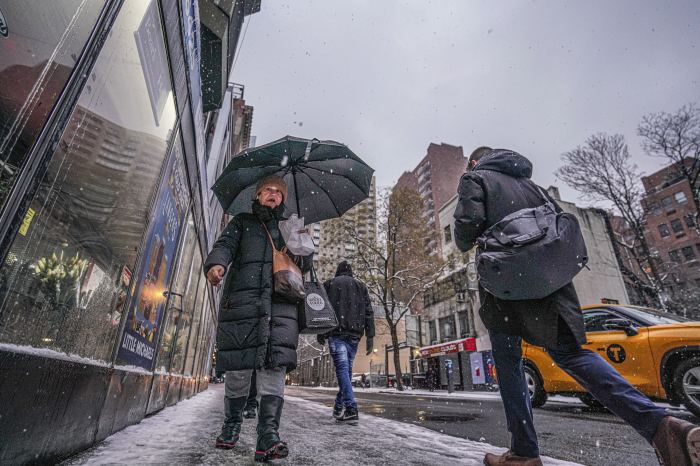New York City remains under a tropical storm warning Friday as Tropical Storm Fay inches closer toward our shores.
As of 8 a.m. Friday morning, the storm’s center was situated just off the Delmarva Peninsula. The National Hurricane Center predicts the storm will move to the north-northeast, hugging the Jersey Shore before arriving in New York late Friday or early Saturday morning.
Ahead of the storm center, the five boroughs are expected to be hit with plenty of rain, strong wind and surf. Up to two inches of rain are expected as feeder bands from Fay arrive in New York City today.
Dangerous waves and rip currents are expected in coastal areas. A flash flood warning has also been issued for the New York City area. There’s also a risk for severe thunderstorms and even isolated tornadoes.
As of 8 a.m., Fay’s storm center, located 55 miles off of Ocean City, Maryland, had maximum sustained winds of 50 mph, and it’s moving to the north at 10 mph.

According to The Weather Channel, Fay is the earliest F-named storm since the National Hurricane Center began naming tropical storms. The 2020 Atlantic hurricane center is expected to be among the most active in recent memory, and Fay is the sixth named system in 2020.
The city’s Emergency Management Department is coordinating a multi-agency Emergency Operations Center to deal with the storm’s potential impacts. The office also activated its Flash Flood Emergency Plan to reduce flooding risks in advance of the storm, and respond to any flooding that might develop.
“We are working closely with National Weather Service to monitor Tropical Storm Fay and the potential impacts it may have to New York City,” said NYC Emergency Management Commissioner Deanne Criswell. “This storm is expected to bring strong winds and heavy rain tomorrow, so make sure you secure loose objects like garbage cans and patio furniture, charge cell phone batteries and other devices, and take other necessary precautions.”
Meanwhile, Governor Andrew Cuomo announced he is dispatching various state resources to New York City and Long Island to help with any storm damage and flooding that may occur.
This story was updated at 9:15 a.m. on July 10.





































